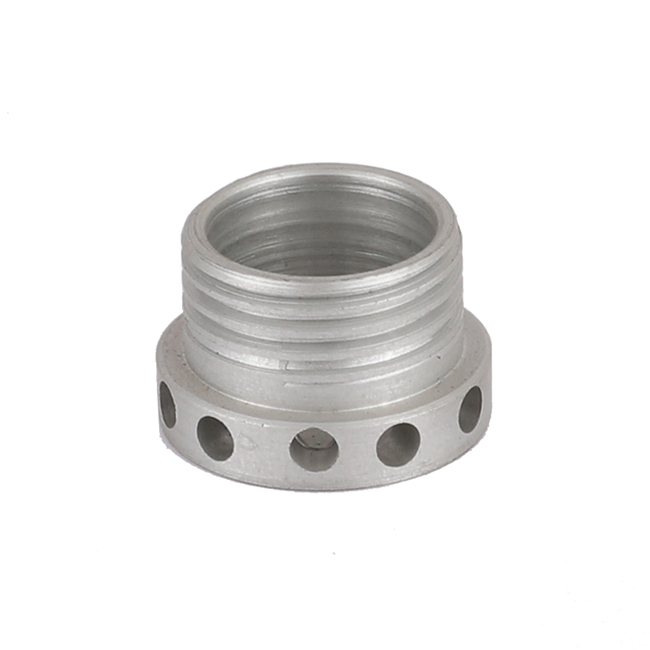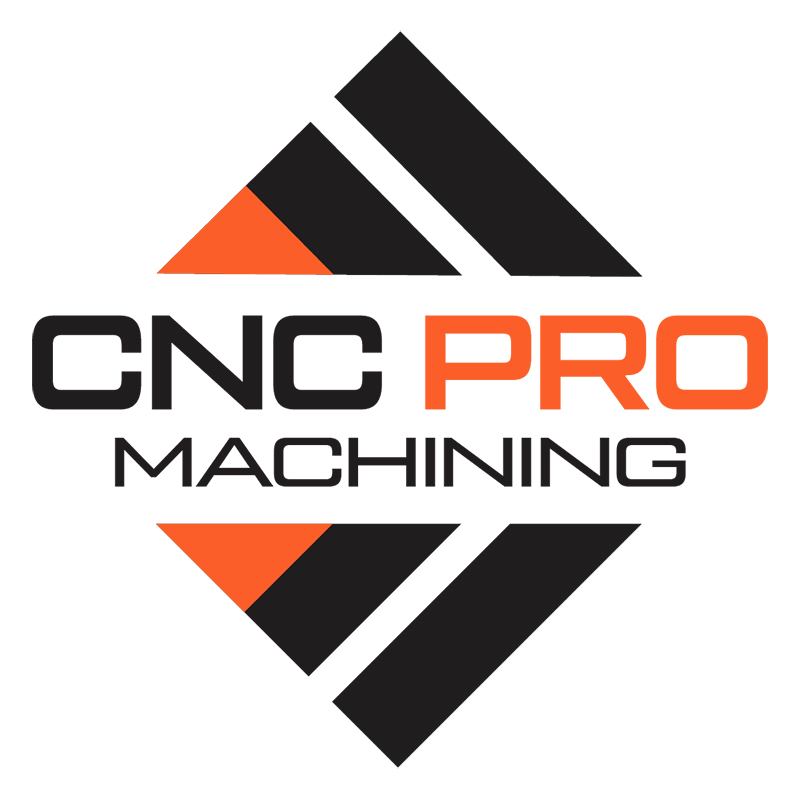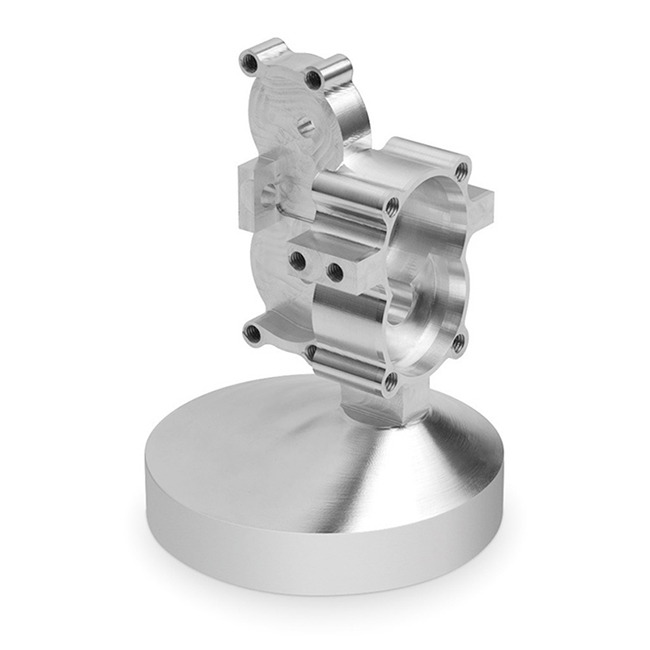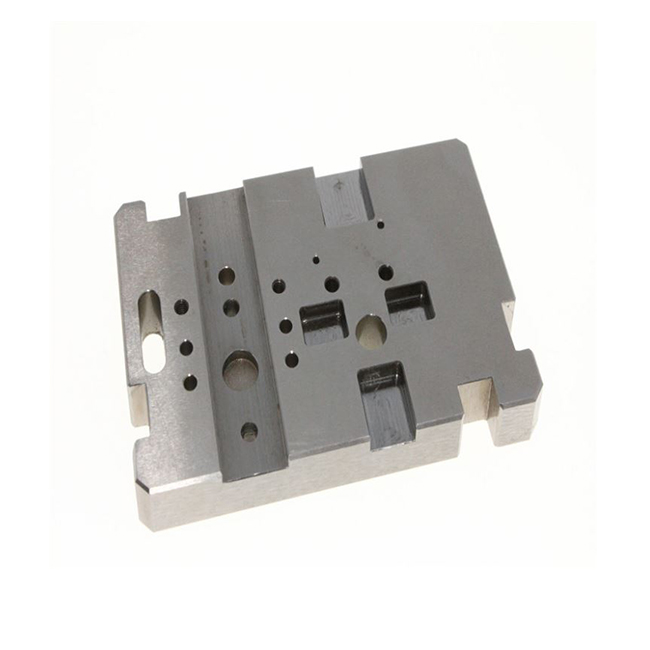


Aluminum Machining Parts
Aluminum Machining Parts
Product Introduction
Aluminum is a lightweight, non-magnetic, silver-colored metal that can be formed into almost any shape.
Product Parameter (specification)
Product name | Aluminum Machining Parts | ||
Material | aluminum | Inner box size | Need asked |
Technology | CNC machining | Carton size | |
Colour | Need asked | Packaging instruction | Carton Box |
Application | Automotive industry, Marine equipment, food machinery, building hardware,heat treatment equipment, petroleum equipment and accessory for high-speed rail,nuclear power station and aerospace | Mode of transport | Express;air;shipping |
Product size | Proofing time | 1-7days | |
Net weight | Delivery time | 15-30days | |
Gross weight | Need asked | Place of origin | China |
Warranty | 12 months | After sales service | 24 hours online |
Product feature and application
Properties of Aluminum
l Excellent corrosion and chemical resistance
l High strength-to-weight ratio
l Good heat and electrical conductivity
l Easily machined
l Reflects heat and light
Aluminum is a popular choice for many metal products and components:
l Auto Parts
l Optical Reflectors
l Cooking Utensils
l Aircraft Parts
l Lighting Fixtures
l Medical Devices
l Electronic Enclosures
l Engine Parts
l Handles and Knobs
Advantages
Transportation: The combination of lightness, strength and malleability makes aluminum the ideal material for transportation applications. It is used in automobiles, airplanes, railways and marine applications and also for making fuel-efficient engines in cars and trucks. Its low weight reduces fuel consumption and emissions.
Construction: Aluminum facilitates the construction of corrosion-resistant and low cost buildings. All kinds of aluminum products are used for new construction as well as renovation and due to its strength and lightness, it is used in earthquake prone zones. It is also a good reflector of light, and is often used in lighting fixtures.
Vehicles: A high proportion of the shock inflicted by an automobile in a motor vehicle accident is absorbed primarily by its aluminum structure.
Air Travel: Strong aluminum alloys take the extreme pressures and stresses involved in high altitude flying. Wafer thin aluminum panels keep the cold out and the air in. Many internal fittings like the seating on airplanes are made from aluminum or aluminum composite in order to save weight and thus save fuel, reduce emissions and increase the aircraft’s payload.
Packaging and Food Processing: It is non-poisonous, which allows for non-acidic food to be safely wrapped in thin sheets like foil and cooked in vessels. Aluminum cookware is easy to lift, requires considerably less heat than stainless steel or cast iron and utensils heat up quickly and evenly.
Electrical Transmission Lines: Aluminum can be drawn into thin wires which are often used in products such as light bulbs and telephone wires. Most of the high voltage overhead transmission and distribution lines over long distances are also made of aluminum.
Production details
·Product name:Aluminum Machining Parts
·Material: aluminum
·Machining Tolerances:0.1mm
·Machining Process:Punching, edging, pressing and welding
Min. Order:100PCS.
·Surface Treatment:Polishing, Heat Treatment, Chroming, TD coating
·Packing:Carton Box, Blister tray, Pallet, Wooden Case.
·Certificate:ISO9001:2008, ISO/TS16949
Product qualification, Deliver,shipping and serving
Q1. What is your terms of packing?
A: Generally, we pack our wheels in brown cartons and also accept to design customers' logo on carton.
Q2. What is your terms of payment?
A: T/T 40% as deposit, and 60% before delivery. We'll show you the photos of the products and packages before you pay the balance. Also, we accept flexible safe payment term, T/T,,WESTERN UNION,PayPal.
Q3. What is your terms of delivery?
A:FOB, CFR, CIF, DDU,DDP
Q4. How about your delivery time?
A: The specific delivery time depends on the items and the quantity of your order.
1. For stock wheels: we need 7 days to prepare cargo after deposit receipt.
2. For production order: generally, it will take 15 to 40 days after receiving your advance payment.
Q5. What is your sample policy?
A: We can supply the sample if we have ready parts in stock, but the customers have to pay the sample cost and the courier cost. Tell us the sample you prefer and we will check our stock.
Q6. Do you test all your goods before delivery?
A: Yes, we have 3 times 100% test before delivery.
Q8: How do you make our business long-term and good relationship?
A:1. We keep good quality and competitive price to ensure our customers benefit ;
2. We renew our wheels design and expand wheels range in short time, try to give you more complete wheel mold list;
3. We respect every customer as our friend and we sincerely do business and make friends with them, no matter where they come from.
Q9.: What's your best convenient contact way:
Call:+86 13145980273(whatsapp&wechat)
Email:sales@cncpromachining.com
FAQ
Q1:WHAT IS ALUMINIUM?
A:Light, durable and functional: these are the qualities that make aluminium one of the key engineering materials of our time. We can find aluminium in the homes we live in, in the automobiles we drive, in the trains and aeroplanes that take us across long distances, in themobile phones and computers we use on a daily basis, in the shelves inside our fridges and in modern interior designs, but a mere 200 years ago very little was known about this metal.
Q2:What are the types of aluminum?
A:The Different Types of Aluminum Grades
l Alloy 1100
l Alloy 2011
l Alloy 2014
l Alloy 2024
l Alloy 3003
l Alloy 5052
l Alloy 6061
l Alloy 6063
l Alloy 7075
Latest news
ALL about aluminum
Aluminium is a silvery-white metal, the 13 element in the periodic table. One surprising fact about aluminium is that it's the most widespread metal on Earth, making up more than 8% of the Earth's core mass. It's also the third most common chemical element on our planet after oxygen and silicon.
At the same time, because it easily binds with other elements, pure aluminium does not occur in nature. This is the reason that people learned about it relatively recently. Formally aluminium was produced for the first time in 1824 and it took people another fifty years to learn to produce it on an industrial scale.
The most common form of aluminium found in nature is aluminium sulphates. These are minerals that combine two sulphuric acids: one based on an alkaline metal (lithium, sodium, potassium rubidium or caesium) and one based on a metal from the third group of the periodic table, primarily aluminium.
Aluminium sulphates are used to this day to clean water, for cooking, in medicine, in cosmetology, in the chemical industry and in other sectors. By the way, aluminium got its name from aluminium sulphates which in Latin were called alumen.
Today we know about almost 300 various aluminium compounds and minerals containing aluminium, from feldspar, a key source mineral on Earth, to ruby, sapphire and emerald, which are far less common.
Humphry Davy. The British physicist and chemist Sir Humphry Davy was the first to obtain a new chemical element using electrolysis: he was able to obtain boron from boric acid. He went on to use electrolysis to isolate six more previously unknown metals: potassium, sodium, barium, calcium, magnesium and strontium. It was Davy who proved the existence of aluminium, the metal found in alumina, and gave it its name.
But regardless of how common aluminium may be, it may have remained hidden forever if it hadn't been for electricity. The discovery of aluminium was made possible when scientists were able to use electricity to break down chemical compounds into their elements. In the 19 century the Danish physicist Christian Oersted used electrolysis to obtain aluminium. Electrolysis or electrolytic reduction is the process that is used to produce aluminium today as well.
Another rather common mineral, bauxite, is used today as the primary raw material in aluminium production. Bauxite is a clay mineral comprising various modifications of aluminium hydroxide mixed with iron, silicon, titanium, sulphur, gallium, chromium, vanadium oxides, as well as sulphuric calcium, iron and magnesium carbonates. In other words, your typical bauxite contains almost half the periodic table. By the way, because of the texture of bauxite about a hundred years ago aluminium was often referred to rather poetically as silver obtained from clay. On the average 4-5 tonnes of bauxite are needed to produce 1 tonne of aluminium.
In the first stage of aluminium production bauxite is processed into alumina, or aluminium oxide Al2O3. Alumina looks like white powder and it is then processed into aluminium at aluminium smelters using electrolytic reduction.
Aluminium production requires huge amounts of electricity, about 15 MWH per tonne of output. That's approximately as much as a 100-apartment block consumes in a month. So the best site for an aluminium smelter is next to a powerful, preferably renewable, energy source. Hydroelectric power plants are the best option as they are the most powerful 'green' energy sources available today.
Properties of aluminium
Aluminium offers a rare combination of valuable properties. It is one of the lightest metals in the world: it's almost three times lighter than iron but it's also very strong, extremely flexible and corrosion resistant because its surface is always covered in an extremely thin and yet very strong layer of oxide film. It doesn't magnetise, it's a great electricity conductor and forms alloys with practically all other metals.
Aluminium can be easily processed using pressure both when it's hot and when it's cold. It can be rolled, pulled and stamped. Aluminium doesn't catch fire, it doesn't need special paint and unlike plastics it's not toxic. It's also very pliable so sheets just 4 microns thick can be made from it, as well as extra thin wire. The extra-thin foil that can be made from aluminium is three times thinner than a human hair. In addition, aluminium is more cost effective than other metals and materials.
Since aluminium easily forms compounds with other chemical elements, a huge variety of aluminium alloys have been developed. Even a very small amount of admixtures can drastically change the properties of the metal, making it possible to use it in new areas. For example, in ordinary life you can find aluminium mixed with silicon and magnesium literally on the road, i.e. in the aluminium alloy wheels, in the engines, chassis and other parts of modern automobiles. As for aluminium zinc alloy, chances are you might be holding it in your hands right now as it's this alloy that's widely used in the production of mobile phones and tablet PCs. In the meantime, scientists keep developing new aluminium alloys.
The modern construction, automotive, aviation, energy, food and other industries would be impossible without aluminium. In addition, aluminium has become a symbol of progress: all cutting edge devices and vehicles are made from aluminium. (link to the Uses section)
It would seem that the mix of qualities enumerated above would already be enough to make aluminium the top choice in industry, however, there is another property that is just as significant: aluminium can be reused over and over again. Both aluminium and its alloys can be melted down and reused without any detriment to its mechanical properties. Scientists have estimated that 1 kg of recycled aluminium cans can save up to 8 kg of bauxite, 4 kg of various fluorides and up to 15 KWH of electricity.
About 75% of aluminium produced in the time that the aluminium industry has existed is still in use today.



